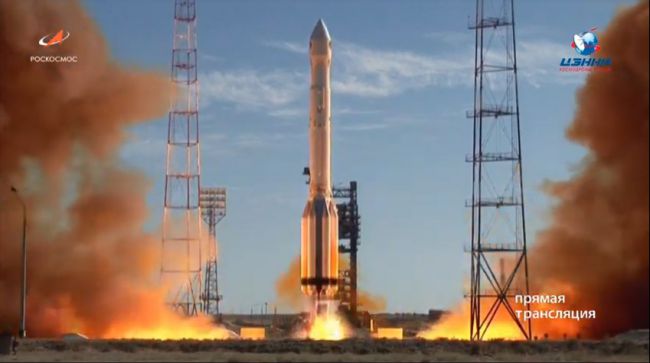
Russia has finally launched its powerful X-ray observatory, Spektr-RG, after a month’s delay caused by faulty batteries on board the spacecraft. The launch took place at 5:30 a.m. PT on Saturday, July 13, taking off from the Baikonur Cosmodrome.
Spektr-RG is a satellite created in cooperation between the Russian Federal Space Agency (Roscosmos) and the German Aerospace Centre (DLR) as well as universities in Russia and Germany. It will survey in the X-ray frequency once it reaches its final destination in 100 days. It is aiming for an orbit sitting between the gravitational pull of the Sun and the Earth in a location called a Lagrange point located 1.5 kilometers (0.9 miles) from Earth. This means that very little fuel is required to keep the observatory in place.
Equipment on board the observatory includes two X-ray telescopes, ART-XC and eROSITA. ART-XC is designed to detect high energy X-rays with a narrow field of view, while eROSITA looks at lower energy X-rays. Together, they will conduct a seven year X-ray survey to search for clusters of galaxies and active galactic nuclei. It is predicted that the survey could locate “several thousand growing supermassive black holes hidden from viewers on Earth by thick clouds of dust and gas concentrating around accretion discs,” according to Russian space commentator Anatoly Zak.
As well as locating interesting cosmic features, information gathered from the observatory could also help scientists learns more about how black holes form and how dark energy affects the way that the universe is expanding.
This will put Russia and Germany at the forefront of X-ray observations, but it has been a rocky road for the Russian space program. As well as the delay to this week’s launch, the project was initially planned to be launched as early as 1995. The program was canceled due to funding issues in 2002, but it was reinstated in 2005 when Germany stepped in to assist. And the Spektr-RG’s predecessor, the Spektr-R satellite, ceased operations in January this year when communications with it were unexpectedly lost. Ground controllers continued trying to contact the satellite until May, when it was declared lost.



